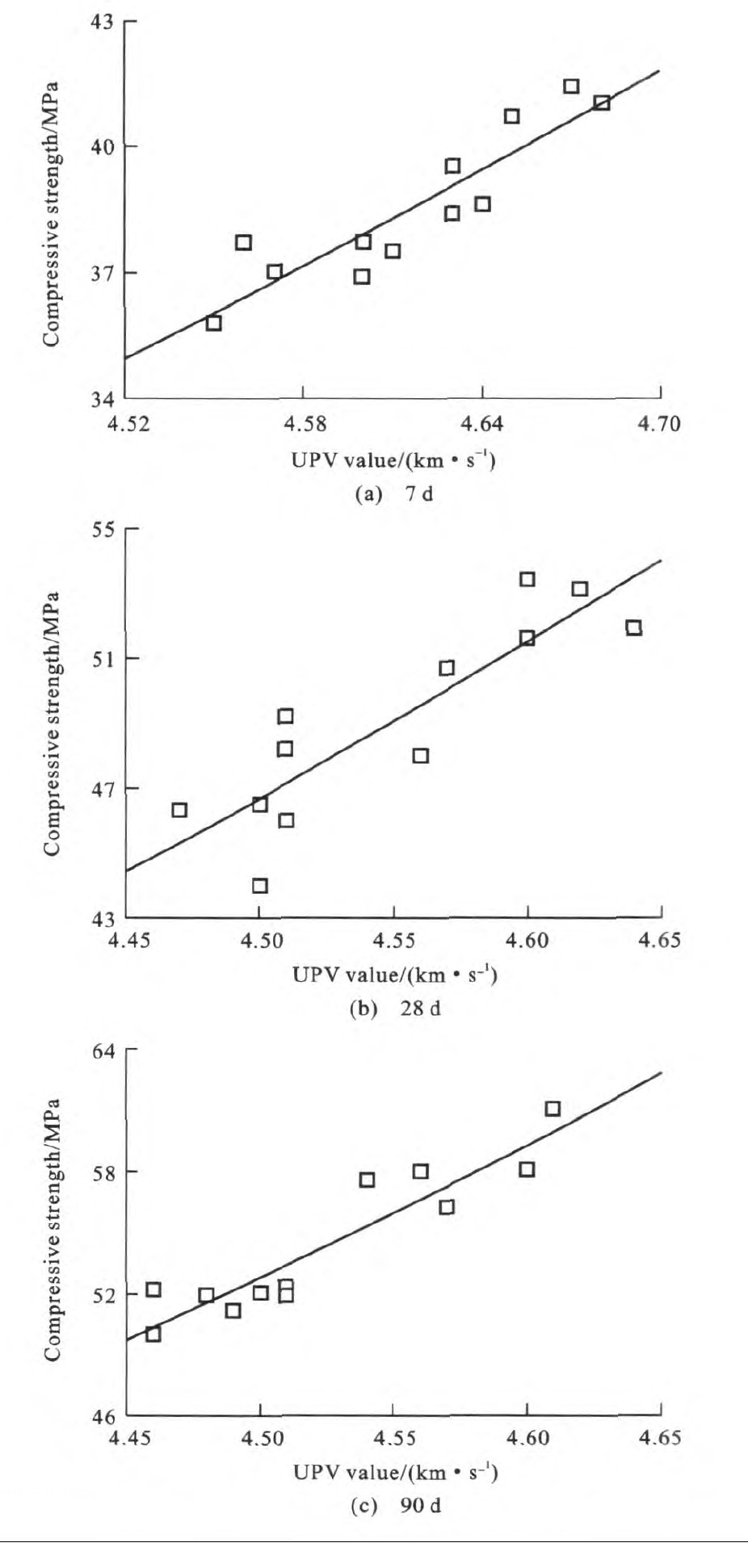Effect of hot weather on compressive strength of steel slag concrete
-
摘要: 将普通混凝土和钢渣质量分数为10%、30%和50%的混凝土试件分别放入40℃、50℃和60℃的热水中, 测试了不同龄期试件的抗压强度和超声波脉冲速度, 分析了炎热天气对钢渣混凝土抗压强度的影响。分析结果表明: 在测试龄期内, 各混凝土试件的抗压强度并不随着炎热天气的影响而发生削减; 钢渣混凝土试件在第90 d达到最高抗压强度61 MPa, 比普通混凝土高18%, 这表明在炎热天气影响下, 钢渣混凝土的抗压强度高于普通混凝土。Abstract: Steel slag concrete specimens were molded, in which the mass fractions of steel slag were respectively 10%, 30% and 50%. Ordinary concrete specimens and steel slag concrete specimens were respectively put into the waters with 40 ℃, 50 ℃ and 60 ℃, their compressive strengths and ultrasonic pulse velocities (UPV) were measured, and the effect of hot weather on the compressive strength of steel slag concrete was analyzed. Analysis result shows that the compressive strengths of concretes cured in hot weather do not decrease at different ages.The maximum compressive strength of steel slag concrete is 61 MPa at age 90 d, and is 18% bigger than that of ordinary concrete.Obviously, steel slag concrete has higher compressive strength in hot weather compared with ordinary concrete.
-
Key words:
- pavement engineering /
- steel slag concrete /
- compressive strength /
- hot weather /
- ultrasonic pulse test
-
Table 1. Chemical compositions of steel slag

Table 2. Compressive strengths of concretes
MPa Mixture notation Age/d 7 28 90 RN 31.0 43.1 48.0 RH40 35.8 48.2 50.0 RH50 36.9 49.2 51.9 RH60 37.7 50.7 52.1 Table 3. Compressive strengths of steel slag concretes
MPa 
Table 4. UPV test result
km·s-1 
-
[1] PRUSI NSKI J R, MARCEAU ML, VANGEEM MG. Life cycle inventory of slag cement concrete[C]//IEEE. International Conference on Fly Ash, Silica Fume, Slag and Natural Pozzolans in Concrete. Piscataway: IEEE, 2004: 1-26. [2] IBRAHIM A J. The effect of hot weather on concrete properties[D]. Budapest: Hungarian Academy of Sciences, 1990. [3] LI Yun-feng, WANG Ling-ling, GUO Hua-xun. Environment-friendly concrete and cement mortar mixed with steel slag[C]//ASCE. Earth and Space 2010: Engineering, Science, Construction, and Operations in Challenging Environments. New York: ASCE, 2010: 485-491. [4] LIZARAZO-MARRIACA J, CLASISSE P, GANJIAN E. Effect of steel slag and Portland cement in the rate of hydration and strength of blast furnace slag pastes[J]. Journal of Materials in Civil Engineering, 2011, 23 (2): 153-160. [5] BS EN 196-1—2005, methods of testing cement—determination of strength[S]. [6] BS EN 196-2—2005, methods of testing cement—chemical analysis of cement[S]. [7] BS EN 196-3—2005, methods of testing cement—determination of setting times and soundness[S]. [8] BS EN 196-6—1992, methods of testing cement—determination of fineness[S]. [9] BS 882—1992, aggregates from natural sources for concrete[S]. [10] BS 5328-2—1997, methods for specifying concrete mixes[S]. [11] CEBECI O Z. Strength of concrete in warm and dry environment[J]. Materials and Structures, 1987, 20 (4): 270-272. [12] DOUGLAS E, ZERBINO R. Characterization of granulated and palletized blast furnace slag[J]. Cement and Concrete Research, 1986, 16 (5): 662-670. [13] HABEEB G M. Residual mechanical properties of highstrength concrete subjected to elevated temperatures[D]. Baghdad: AI-Mustansiriyah University, 2000. -





 下载:
下载:


